Essential hail repair advice for drivers
Professional hail repair easily beats risky DIY kits

FSDAVCFEBFEVSDDVFSD
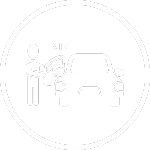
FSDAVCFEBFEVSDDVFSD

FSDAVCFEBFEVSDDVFSD
DIY Dent Kits Hide Pitfalls Most Drivers Miss
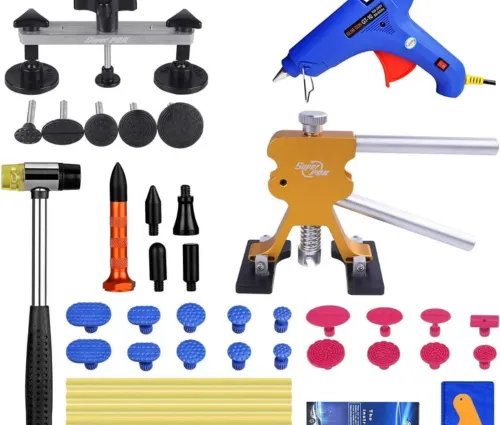
Search video sites and you’ll see home mechanics trying to remove hail dents DIY with glue sticks, canned air, or suction cups. The idea sounds brilliant—buy a thirty-dollar kit, spend a Saturday afternoon, and skip the body shop bill. But fixes rarely account for metal memory, paint flex, or panel bracing. One wrong pull can stretch steel, crack clearcoat, and slash resale value for owners.
DIY dent tools also ignore the unseen complexity of modern vehicles. Many hoods contain aluminum, while doors hide high-strength steel mixed with plastic impact beams. Pulling these materials with generic tabs risks warping the panel beyond factory tolerances. Worse, household adhesives can rip paint when cured under midday heat, leaving bare metal susceptible to rust and voiding any remaining corrosion or paint warranty coverage overnight.

Professional PDR Delivers Predictable Results
Paintless dent repair, or PDR uses specialized rods, LED boards, and controlled pressure to coax metal back to its original contour without disturbing the factory finish.Technicians train for years reading panel tension lines, gauging metal elasticity, and accessing dents through tiny factory openings. That knowledge produces smooth, wave-free panels that pass dealer paint-thickness inspections and hold manufacturer corrosion coverage.
A reputable professional dent repair Missouri shop assigns each job to a certified technician who documents damage under calibrated lighting. Digital measurements determine dent depth, diameter, and metal stretch before tools touch the surface. Clear printouts are shared with the owner and, if needed, the insurance adjuster. This transparent process avoids guesswork, supplements properly, and keeps claim timelines on track.
Professional shops also invest in temperature-controlled bays that prevent paint cracking during metal movement. By warming panels to manufacturer-recommended levels, technicians maintain clear coat flexibility and avoid microscopic fractures. After completion, vehicles are polished, scanned for missed lows, and delivered with a lifetime warranty on the repair assurance no mail-order kit or weekend driveway attempt can match.
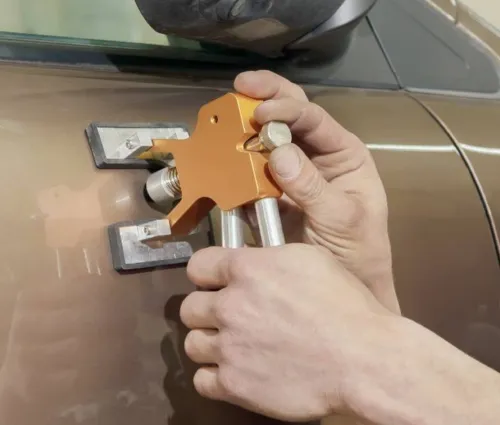
Common DIY Dent Repair Failures We Regularly Fix
Glue-pull kits promise simplicity, yet most users apply too much adhesive or yank the tab before it cools. The sudden snap leaves a volcano-shaped high spot surrounded by fractured clearcoat. We see hoods dotted with these bumps weekly. Removing them requires painstaking tap-down work and often more time than the original hail repair would have taken in the first place.
Suction devices fare no better. Because pressure spreads outward, they pull the skin, creating a dish instead of a focused lift. The metal then spring-backs unpredictably, leaving creases along body lines.These distortions demand complex PDR blending rods and sometimes trim removal, adding labor cost that dwarfs any DIY dent kit vs professional PDR savings.

Heat-and-freeze tricks from social media are even riskier. Spraying canned air after blasting a dent with a hair dryer shocks paint, causing micro-cracks invisible at first glance. Weeks later, moisture creeps in, fogging the clear layer. By the time owners notice dull spots, factory coverage is gone and the panel needs full refinishing properly again.
Technicians at Dentex Midwest routinely reverse these self-inflicted wounds. A recent sedan arrived with four suction dish marks, each larger than the original dime-sized dent. The PDR specialist first mapped the stretched metal under LED grids, then gently tapped down the highs before applying controlled lifts. Two hours later the hood reflected light perfectly, and paint-thickness gauges confirmed factory spec. The owner admitted the kit seemed cheaper until her mistake doubled the repair time significantly.
Another case involved a truck tailgate scarred by dried glue blobs. Removing the hardened adhesive alone took forty minutes of careful solvent work to avoid stripping the clear coat. Once clean, the technician used cold-glue tabs designed for high-strength steel and gradually lifted the dent in six passes, adjusting tool leverage each round. The final polish revealed zero pull rings or color distortion. The customer left grateful and slightly wiser about internet shortcuts she found on YouTube.
True Cost of DIY Damage Revealed for Drivers
People purchase dent kits thinking they’ll dodge an insurance claim, but additional repairs often exceed the comprehensive deductible. Stretching metal can require partial repainting even after PDR smoothing, and cracked clear coat mandates blending adjacent panels to hide color mismatch. Those added paint booth hours elevate the bill far beyond what a straightforward professional PDR session would have cost initially.
Lost time carries its own price. A DIY attempt can sideline a daily driver for days while owners research fixes, wait on replacement tabs, and wrestle with stubborn glue residue. Professional dent repair Missouri facilities schedule most hail repairs within a single workday and provide loaner cars if parts removal is required, minimizing disruption to families and small businesses alike.
Resale value drops too. Pre-purchase inspectors look for non-factory paint thickness and poorly corrected body lines. When they find amateur marks, they discount the vehicle or walk away entirely. By choosing PDR first, owners maintain clean Carfax photos and dealer appraisal books list the car as “no paintwork,” fetching hundreds more at trade-in during evaluations.
Choosing the Right PDR Specialist: Certification, Experience, Trust
Start by confirming training. Certified technicians complete Vale or PDR Nation assessments that test panel access, metal tension reading, and finishing techniques. A framed certificate on the wall shows commitment to ongoing skill growth, not weekend crash courses promoted by tool vendors selling kits online.
Inspect the shop environment. Clean bays, lighting, and temperature control protect paint during metal movement. Ask to see dedicated PDR areas separate from sanding and painting zones. Dust particles that land on rods or glue can scratch clearcoat, so professional facilities keep workflows isolated.
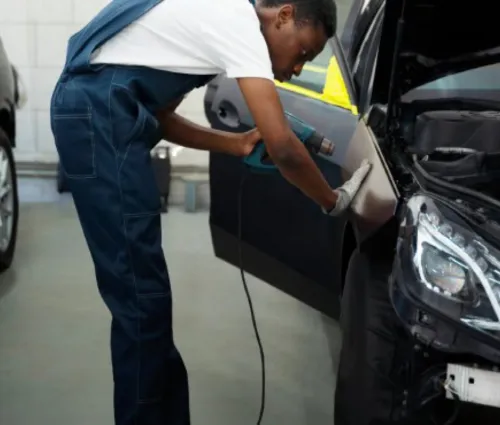

A warranty stating that repaired panels will retain factory paint thickness safeguards you if future issues arise. Detailed before-and-after photos create a record for insurance or resale negotiations. Reputable shops gladly provide these documents without extra fees or complicated requests from customers.
Dentex Midwest meets these criteria with I-CAR Platinum technicians, a climate-controlled PDR bay, and printed thickness reports handed to every customer. By limiting filler and paint work to collision cases only, the team guarantees that hail repairs remain warranty-friendly. The shop also offers on-site rental cars and text updates, so drivers can keep moving while their panels are restored. This combination of transparent records, convenience perks, and skilled craftsmanship makes professional dent repair Missouri residents can trust the exact opposite of gamble-and-hope DIY methods, saving them time, money, and future stress.
Quick Decision Guide for Drivers Choosing Right Repair
Inspect the dent under bright light before acting. If the paint is intact and the metal isn’t sharply creased, PDR is almost always the safest choice. Compare that scenario with kit instructions suggesting heat guns or screws to pull damage; each extra step multiplies risk. Remember that factory paint warrants durability only in its original state any scratch, solvent stain, or added layer places responsibility solely on the vehicle owner later.
Calculate true costs next. Price the kit, additional tools, cleanup supplies, and the value of your time at an hourly rate. Add potential repaint fees if the attempt goes wrong. Then request a free professional dent repair Missouri estimate. Owners are often surprised that expert PDR prices fall within fifty dollars of the DIY tally yet include warranties, insurance coverage, and zero personal labor, making the decision far more sensible.
Consider peace of mind. A seasoned PDR technician carries specialized insurance, corrects any rare comeback for free, and logs every repair into shop management software for future reference. If you sell the car, paperwork proves no repaint, protecting value. No kit offers that reassurance, and no online tutorial stands beside you if something cracks leaving you with costly regrets.
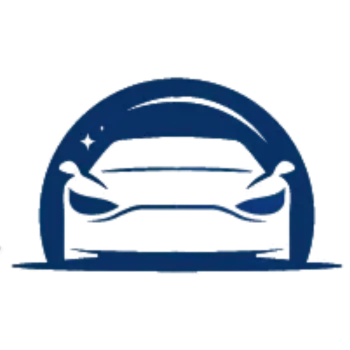
Dentex Midwest
Professional Hail Repair & PDR
Stay Up-to-date With Our Content
Subscribe to learn more about our mission!
Stay Up-to-date With Our Content
Subscribe to learn more!
Contact Info
Service Hours
Social Media
Home
Services
Service Areas
Blog
About
Contact
Contact Info
Service Hours
Mon - Fri: 8:00 am – 6:00 pm
Saturday: by Appointment
Sunday: Closed
Social Media

Licensed, bonded, & insured